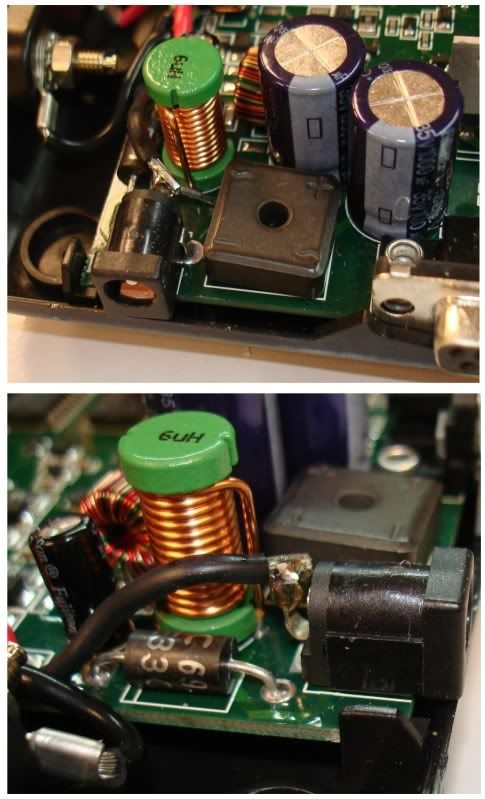I made a new power cord with a Radio Shack plug (2.1mm ID and 5.5 mm OD) and was back in business. That was about six months ago.
Yesterday, while wiring more of my switch-tracks (42 out of 57 done!), the same TIU quit working. Once again, it had no power, and once again, it was a plug problem; it was partially melted. I moved it within the TIU socket, and the TIU came on and stayed on. But I didn’t like the idea of a potentially intermittent connection, so I decided to change the plug.
This plug is the one I wired months ago, and although the outside shows signs of overheating, the actual connections are fine, unlike the previous plug, which appeared to have had an internal short. See picture below.

Not been able to pinpoint the cause for the overheating, I removed the cover of the TIU to see if I there were any tell tales around the Aux Power socket. But there were none; everything looks fine to me. See picture below.

I made a new power cord with a new plug (same style as before) and once again I am back in business. I left the TIU’s on for one hour and felt the new plug with my hand and it felt rather warm. I felt the plug of the other TIU (different style plug) and it also felt warm. This other plug is designed so it will more readily dissipate heat, and instead of plastic it is a hard rubber.
I am not sure, but I imagine the power consumption is about 15 to 18 watts – 18 volts and perhaps one amp? Is it normal for these plugs to get rather warm? Has anyone else had this problem?
Thx!
Alex


